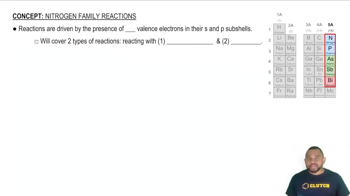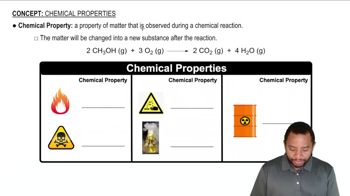Assign oxidation numbers to each element in the following ions. (d) MnO4 2-

Nitrogen can have several different oxidation numbers ranging in value from -3 to +5. (a) Write the formula and give the name of the nitrogen oxide compound in which nitrogen has an oxidation number of +1, +2, +4, and +5.
 Verified step by step guidance
Verified step by step guidance
Verified video answer for a similar problem:
Key Concepts
Oxidation States

Nitrogen Oxides

Chemical Nomenclature

Assign oxidation numbers to each element in the following ions. (e) HPO4 2-
Assign oxidation numbers to each element in the following ions. (f) V2O7 4-
Nitrogen can have several different oxidation numbers ranging in value from -3 to +5. (b) Based on oxidation numbers, which nitrogen oxide from part (a) cannot react with molecular oxygen?
Phosphorus can have several different oxidation numbers ranging in value from -3 to +5. (a) When phosphorus burns in air or oxygen, it yields either tetraphosphorus hexoxide or tetraphosphorus decoxide. Write the formula and give the oxidation number for each compound.
Phosphorus can have several different oxidation numbers ranging in value from -3 to +5. (b) Based on oxidation numbers, which phosphorus oxide compound from part (a) was formed by combustion with a limited supply of oxygen?
